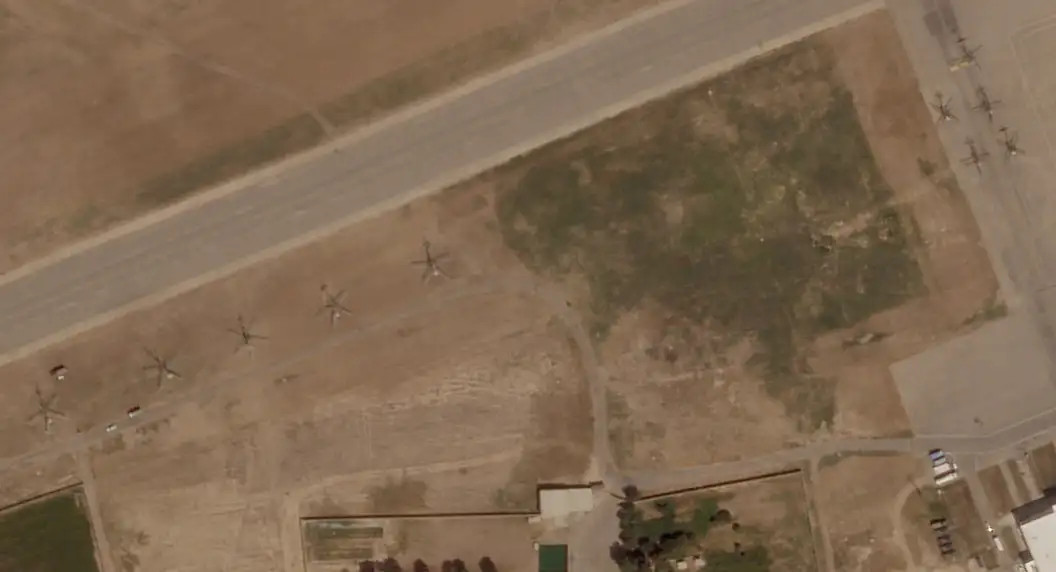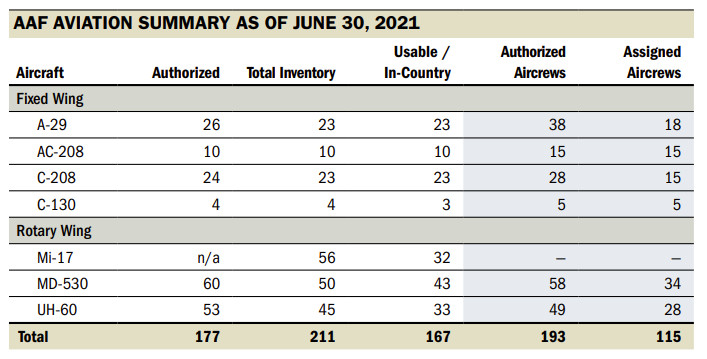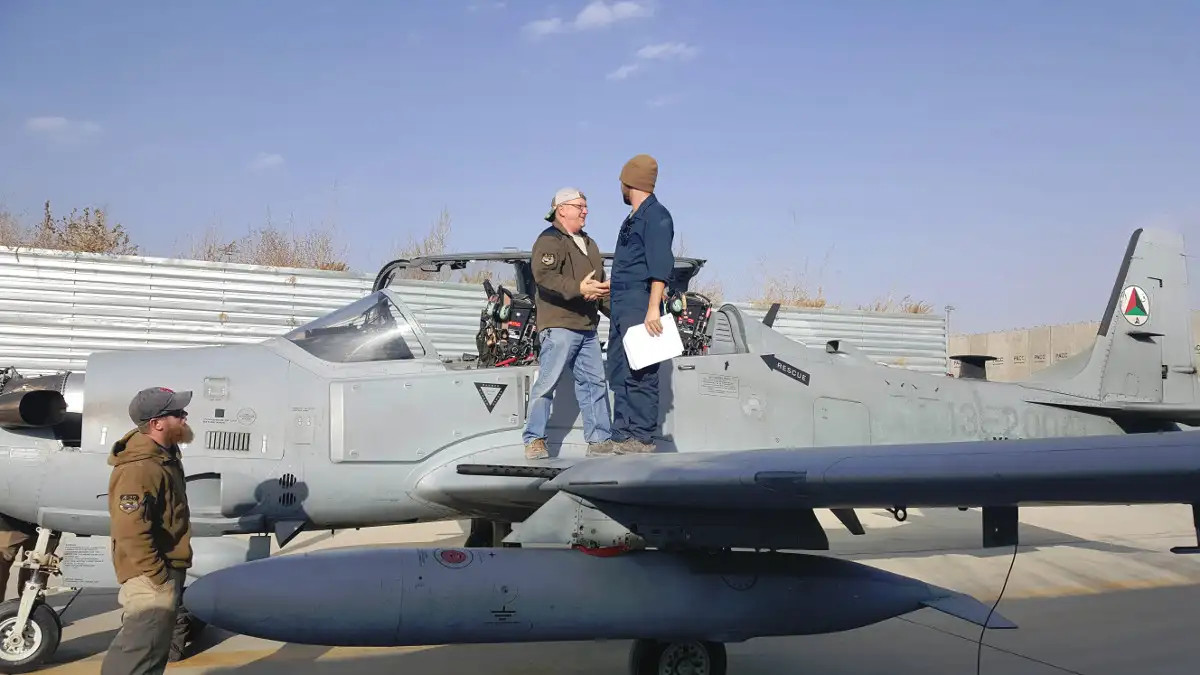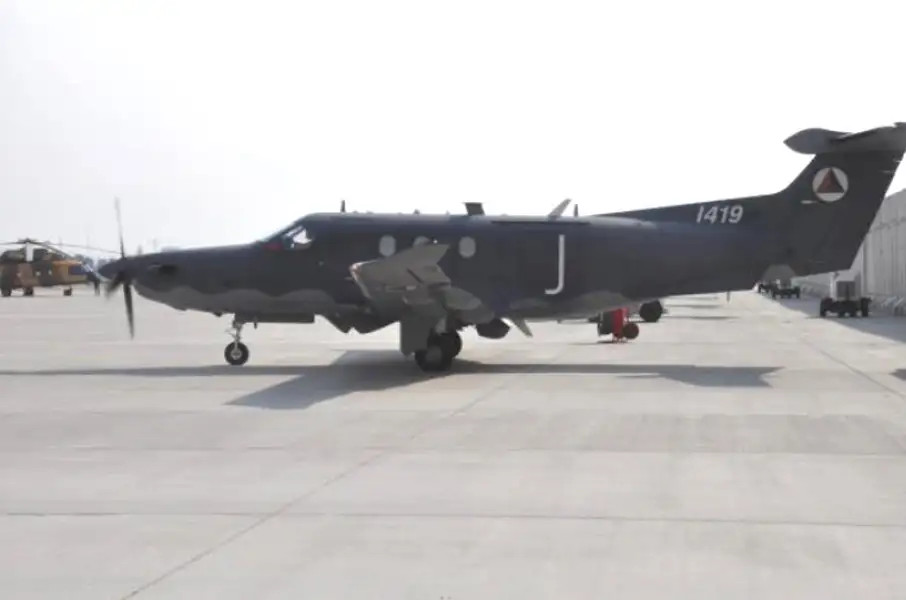A video has emerged online that is said to show a former Afghan Air Force UH-60 Black Hawk, supplied by the United States and now under the control of the Taliban, taxing on the ground at Kandahar Airport in southeastern Afghanistan. Whether the description of the video is accurate or not, it is likely to be at least a propaganda coup for the Taliban, which seized substantial amounts of American-financed military aircraft, light armored vehicles, weapons, and more that had belonged to government security forces over the course of its lightning-quick conquest of the bulk of the country earlier this month. At the same time, it remains to be seen how extensively the Taliban will use any of the Black Hawks, or any other aircraft the group has captured, or if they will serve other purposes, including simply as trophies.
It is important to note that the video, seen in the Tweet below, does not show the UH-60 in question actually flying and there is no indication one way or another that it got off the ground in this particular instance. It's also not clear who might be behind the controls.
It is difficult to accurately assess how many UH-60s, or any other types of former Afghan military aircraft, that the Taliban have now captured. Last week, Reuters
reported that the Taliban had seized approximately 40 fixed-wing planes and helicopters, but satellite imagery from that The War Zone has reviewed from Planet labs indicates that this total is likely higher.
Experts and observers had already identified what appeared to be at least four different Black Hawks under Taliban control. This included two at the airport in Kandahar, which is collocated with a major air base that the U.S. military turned over to the now-defunct government of the Islamic Republic of Afghanistan in May.
It is also known that dozens of aircraft from the former Afghan military have fled the country to airports in neighboring Uzbekistan and Tajikistan. Satellite imagery indicates that six UH-60s were among the dozens of fixed-wing types and helicopters that arrived at Termez Airport in Uzbekistan in the aftermath of the fall of Kabul on Aug. 15. You can read more about that in detail in this past War Zone piece.

Accurate accounting, in any way, of former Afghan military aircraft is made even more difficult by the lack of available public information on the inventory of the former Special Mission Wing (SMW), a dedicated special operations aviation element that was separate from the Afghan Air Force. It is unclear what the SMW's overall size at the time of the collapse of the country's government, or at any time prior to then, and what overlap there might have been, if any, between in its fleets and those of the Afghan Air Force.
As of June 30, the Afghan Air Force had 45 UH-60s, 33 of which were categorized as "usable / in-country," according to the most recent quarterly report from the Special Inspector General for Afghanistan Reconstruction (SIGAR), a U.S. government watchdog that Congress established in 2008. That same report said that the SMW had just recently begun to integrate Black Hawks into its operations, but does not make clear whether or not those helicopters remained technically assigned to the Afghan Air Force's fleet.

Whatever the total number of Black Hawks that remain in Afghanistan might be, and whether or not this newly emerged video does actually show one that now belongs to the Taliban moving on the ground, how many Black Hawks the group has now that could be reasonably described as flyable is a completely different question. The decision by the U.S. government to supply UH-60s to the Afghan Air Force, ostensibly to supplant its Russian-made Mi-8/Mi-17 Hip-type helicopters, was highly controversial, to begin with.
Though the case was made that the new helicopters offered valuable additional capability for Afghanistan's security forces, the decision was largely driven by U.S. sanctions on Russian creating significant hurdles for the continued sustainment of the existing Hips. A general push to "buy American" and other political considerations were also factors, despite the Afghan military's extensive experience with Mi-8/Mi-17 series and lack thereof with regards to the UH-60. It's worth noting that footage of the Taliban flying in Hips has, perhaps unsurprisingly, already surfaced.
By the time Kabul fell, maintenance of the Afghan Black Hawk fleet was still almost entirely reliant on foreign contractors, who left the country earlier this year as part of the U.S. government's existing drawdown plan.
Contractors continued to work with their Afghan counterparts remotely, but their absence on the ground have a huge impact on the readiness of the UH-60 fleet, as well as others. "The [readiness rate of the] UH-60 fleet was at 77% in April and May, but dropped to 39% in June," according to SIGAR's last quarterly review. That report also said that "the SMW can field no more than one UH-60 per night for helicopter missions," a notable detail, given that the SMW was long understood to be better resourced than the regular Afghan Air Force.
"A technical issue now meant an aircraft — a Black Hawk helicopter, a C-130 transport, a surveillance drone — would be grounded," Lieutenant General Sami Sadat, who had been the commander of the Afghan National Army's 215th Corps, wrote in a piece that The New York Times
published just today. "The contractors also took proprietary software and weapons systems with them. They physically removed our helicopter missile-defense system. Access to the software that we relied on to track our vehicles, weapons and personnel also disappeared. Real-time intelligence on targets went out the window, too."
Contractor-related issues were only some of the factors in the readiness equation. As of June 30, despite having 45 UH-60s in inventory, the Afghan Air Force only had 28 complete, fully-qualified Black Hawk aircrews, which would include the pilot, co-pilot, and crew chief. It's also worth noting that the Taliban had been actively pursuing a campaign of assassinating Afghan Air Force pilots as part of the group's overall campaign to take control of the country.
As already noted, we don't know who might have been in the cockpit of the helicopter seen in the video reportedly taken in Kandahar and the Taliban may well have deliberately shrunk the pool of potentially available pilots with any experience on the Black Hawk. This does not, of course, completely eliminate the possibility that the group may have subsequently enticed or coerced at least one such pilot to defect.
A lack of qualified maintenance personnel and sources of spare parts could still lead to any remaining operational Afghan UH-60s ending up grounded. At the same time, depending on the state of the entire fleet of captured Black Hawks, the Taliban might be able to cannibalize other airframes to help keep a smaller number airworthy. The group, who is well on their way to establishing a new formal government in Afghanistan, could reach out to other countries. China, which has been actively engaging with the Taliban in recent months, notably purchased a small fleet of S-70s, the commercial version of the Black Hawk, in the 1980s and has experience operating and supporting the type.
Regardless, the captured Black Hawks, flyable or not, will still be useful to the Taliban as trophies for propaganda purposes than as operational airframes. It also remains to be seen whether or not any foreign countries, such as Russia or China, will have any interest in the UH-60s for their intelligence value or any other reason, though this seems unlikely.
The Black Hawks that the U.S. government supplied to the Afghans were refurbished ex-U.S. Army UH-60A models brought up to a standard, referred to as UH-60A+, which was described as being close, performance-wise to the UH-60L. UH-60As and UH-60Ls, and equivalent commercial models, have been in service around the world for decades now, and are not representative of the latest UH-60M and UH-60V variants in U.S. Army service. There is also no indication that the United States ever followed through on plans to deliver more capable armed gunship variants of the Black Hawk to Afghan forces, which might have contained more sensitive systems.
Questions about the Taliban's ability to use and sustain any Black Hawks it now possesses, even in the near term, apply equally to other captured Afghan military aircraft. The need for extensive contractor support was a major factor in the readiness of other types, as well, including A-29 Super Tucano light attack aircraft and AC-208 armed light utility planes, both of which were capable of employing precision-guided munitions.

The A-29s and AC-208s were arguably the most modern aircraft in the Afghan Air Force's inventory and the systems on board those planes, such as their sensor turrets or avionics, could be of greater value to outside actors, including foreign intelligence agencies. This would also be the case with regards to any ex-SMW PC-12NG intelligence, surveillance, and reconnaissance aircraft now in Taliban hands. The actual capabilities of the specialized PC-12NGs and their overall configurations are somewhat of a mystery, making them perhaps the biggest question mark in terms of intelligence vulnerabilities.

It is worth noting that General Sadat's New York Times piece does raise new questions about whether certain sensitive pieces of equipment were already removed from various Afghan military aircraft as contractors left the country, specifically to mitigate any security risks.
"It’s understandable for people to be concerned about any capability falling into the hands of folks where we don’t know exactly how they’re going to use it, who are going to use it against, whether that’s an M16 [rifle] or whether that’s an A-29,” U.S. Air Force General Mark Kelly, head of Air Combat Command, had also told Defense News in an interview last week. “But suffice to say that the technology that’s in the A-29 is not cutting-edge technology."
The Taliban could also seek to negotiate with the United States over the Black Hawks, or any other aircraft it has captured. Though the possibility seems remote, finding a way to effectively sell the aircraft back to the U.S. government could be especially beneficial for the group given that billions of dollars in Afghan government funds are now frozen in American banks. They could also seek to sell significant portions of the former Afghan military aircraft fleets to other buyers.
Whether the U.S. government might seek to impede any of this directly remains in question. There have been reported discussions among American officials already about the potential of using airstrikes to destroy captured equipment in Afghanistan after the ongoing evacuation operations in Kabul wrap up.
No matter what, the Taliban just getting a Black Hawk up and running at all is certainly embarrassing for the U.S. government and the group has multiple ways it could exploit those helicopters, as well as other U.S.-supplied aircraft it has now captured. At the same time, the actual operational utility of any of those planes or helicopters or the actual security risks they might pose to the United States, or its allies and partners, remain to be seen.
Contact the author: joe@thedrive.com
